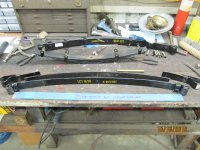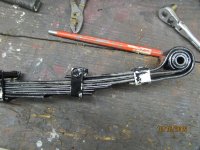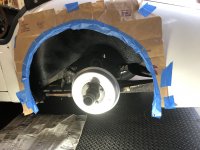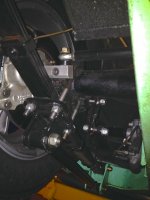-
 Hi Guest!
Hi Guest!
If you appreciate British Car Forum and our 25 years of supporting British car enthusiasts with technical and anicdotal information, collected from our thousands of great members, please support us with a low-cost subscription. You can become a supporting member for less than the dues of most car clubs.
There are some perks with a member upgrade!**Upgrade Now**
(PS: Subscribers don't see this gawd-aweful banner

Tips
- We have a special forum called "Member Articles" where you can submit actual articles for consideration for publication. Learn More
- Don't have an Avatar? If not, your avatar will default to the 1st character in your username. Go into "Account Details" to change your Avatar.
- Some basic forum navigation info: click
Hey - did you know if you click on the title of a thread it will take you to the first unread post since you last visited that thread?
- Hey Guest - Is your British Car Club in our Clubs database? If not, send me a PM - Basil

- Looking for a local club? Click the "Clubs" tab above and browse hundreds of clubs world-wide.
- Add Android or iPhone APP: click
- Did you know - any picture or video you add in your posts in any marque-specific forum will also get added to the Media Gallery automatically.
- A few more tips about posting and replying: click
- Hey there Guest - be sure to keep your profile page up to date with interesting info about yourself: learn more
- More tips and tricks on Posting and Replying: click
 STOP!! Never post your email address in open forums. Bots can "harvest" your email! If you must share your email use a Private Message or use the
STOP!! Never post your email address in open forums. Bots can "harvest" your email! If you must share your email use a Private Message or use the  smilie in place of the real @
smilie in place of the real @
- Want to mention another member in a post & get their attention? WATCH THIS

- So, you created a "Group" here at BCF and would like to invite other members to join? Watch this!
- Hey Guest - A post a day keeps Basil from visiting you in the small hours and putting a bat up your nightdress!
- Hey Guest - do you know of an upcoming British car event?
 Pretty Please - add it to our Events forum(s) and add to the calendar! >> Here's How <<
Pretty Please - add it to our Events forum(s) and add to the calendar! >> Here's How << 
- Hey Guest - you be stylin'
Change the look and feel of the forum to fit your taste. Check it out
- If you run across an inappropriate post, for example a post that breaks our rules or looks like it might be spam, you can report the post to the moderators: Learn More
- If you would like to try some different "looks" or styles for the site, scroll to the very bottom, on the left and click the Style Selector.
You are using an out of date browser. It may not display this or other websites correctly.
You should upgrade or use an alternative browser.
You should upgrade or use an alternative browser.
Lubricating Leaf Springs
- Thread starter Lin
- Start date
red57
Jedi Knight
Offline
Hi Lin,
I would be afraid grease would attract grit. As far as I determined the originals had Zink strips between the top 4 leaves (3 strips), but I could not find any vendors selling correct Zink lined springs, so I bought some sheet and sheared to width and installed in the new springs I bought - I haven't driven the car yet so not sure they are as quiet as I hope.
Dave
I would be afraid grease would attract grit. As far as I determined the originals had Zink strips between the top 4 leaves (3 strips), but I could not find any vendors selling correct Zink lined springs, so I bought some sheet and sheared to width and installed in the new springs I bought - I haven't driven the car yet so not sure they are as quiet as I hope.
Dave
Attachments
Offline
Hi Lin--
If you cannot find a resource I suggest you start here: > Home - Annapolis Rigging <
I live about an hour south and usually am in Annapolis every week or so--let me know if I can help.
If you cannot find a resource I suggest you start here: > Home - Annapolis Rigging <
I live about an hour south and usually am in Annapolis every week or so--let me know if I can help.
Offline
Thanks Dave and Mike,
Mike, once you reminded me about the Annapolis Rigging, I remembered that you had recommended them to me years ago. I went to the garage and dug into my tape/adhesive drawer and sure enough I found the Teflon tape and as an extra bonus there is enough of it for this job. Thanks for the memories…
Dave, I agree with your comment about grease attracting grit, and I am in Florida where there is plenty of sand and grit!
Lin
Mike, once you reminded me about the Annapolis Rigging, I remembered that you had recommended them to me years ago. I went to the garage and dug into my tape/adhesive drawer and sure enough I found the Teflon tape and as an extra bonus there is enough of it for this job. Thanks for the memories…
Dave, I agree with your comment about grease attracting grit, and I am in Florida where there is plenty of sand and grit!
Lin
Keoke
Great Pumpkin
Offline
LIN I always used Coppa Slip worked greatThanks Dave and Mike,
Mike, once you reminded me about the Annapolis Rigging, I remembered that you had recommended them to me years ago. I went to the garage and dug into my tape/adhesive drawer and sure enough I found the Teflon tape and as an extra bonus there is enough of it for this job. Thanks for the memories…
Dave, I agree with your comment about grease attracting grit, and I am in Florida where there is plenty of sand and grit!
Lin
Donald1107
Senior Member
Offline
Let me ask you experts about my 1959 TR3A leaf springs. They are the originals, probably never been cleaned and probably do not have any lubricating strips between the leaves. The car was undercoated before I bought it in 1987, which was apparently on the leaf springs. Questions: should I do more than just thoroughly wire brush them all over (to clean them up)? They don’t squeak, so I’m not sure they need lubrication, but perhaps WD40? What would you recommend short of disassembling them?
Bob_Spidell
Yoda
Offline
WD40 is a lousy lubricant as it wasn't developed for that purpose (it is, however, excellent for preventing water contamination on your nuclear warheads). Nothing thin enough to squeeze between the leaves is going to last very long, but I've had good results using silicone spray lubricant (it's excellent for 'fixing' squeeky door hinges, for instance).
Healey Nut
Luke Skywalker
Offline
How about a dry spray graphite lube ?
Donald1107
Senior Member
Offline
Thank you both. I know that WD40 is not a lubricant, but I was under the impression that 1959 leaf spring technology did not use any lubricant. And I’m told that grease will just attract dirt. The dry graphite sounds like a good idea; has anyone used it? I plan to wire brush the leaf springs thoroughly, and perhaps spray the sides and shackles if the springs with the graphite.
Donald1107
Senior Member
Offline
Bob_Spidell
Yoda
Offline
Thank you both. I know that WD40 is not a lubricant, but I was under the impression that 1959 leaf spring technology did not use any lubricant. And I’m told that grease will just attract dirt. The dry graphite sounds like a good idea; has anyone used it? I plan to wire brush the leaf springs thoroughly, and perhaps spray the sides and shackles if the springs with the graphite.
My '56 BN2/100M's springs had zinc strips between the leaves (I'm pretty sure no one had them apart before my dad did). I've always assumed they were there to provide 'lubrication.'
Last edited:
Offline
I wonder if this product would work? The manufacturer claims that is 99.44/100 % pure zinc:
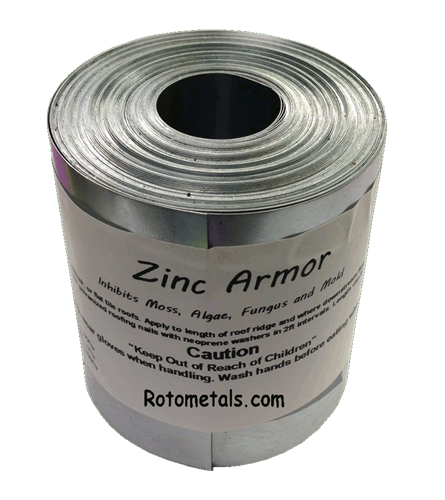
 www.rotometals.com
www.rotometals.com

ZincArmor 3" Zinc Strip 50 ft Prevent Algae, Moss, Fungus & Mildew CB-07-E1
sales@rotometals.com
Donald1107
Senior Member
Offline
This looks like something that you would have to disassemble the leaf stack and put between the leaves. I don’t think that I am at that point. My springs don’t squeak, but are very dirty, at least on the outside. Face it, they are 63 years old; never been disassembled as far as I know. At least by me, and I’ve owned it for 36 years, 32 of those idle in a garage.
Thanks for the idea, though.
Previous photo was a front wheel. Here you can see the spring on the back wheel when I painted the wheel well.
Thanks for the idea, though.
Previous photo was a front wheel. Here you can see the spring on the back wheel when I painted the wheel well.
Attachments
Bob_Spidell
Yoda
Offline
I think it would (but might have to be cut down lengthwise to not stick out). IMO graphite, if not in liquid form, wouldn't penetrate much between the leaves.
FWIW: > Cleaning and checking leaf springs <
FWIW: > Cleaning and checking leaf springs <
Donald1107
Senior Member
Offline
Yes, you are probably right; the zinc strips are 3” wide. But I’m not prepared to completely disassemble the springs … yet.
The car’s odometer reads 23,700 miles. I have put about 10,000 miles on it after I got it running when I bought it in 1987. I suppose it could have turned over 100,000 before I bought it (between 1959 and 1987), but it was in pretty sorry condition when I acquired it. Believe it or not, I drive it home in 1987, and it boiled over twice. I found no (I.e. zero) compression in all four cylinders. When I dropped the pistons, they had NO rings. Some idiot must have just thrown it together for sale, and failed to put in rings. It had many other problems that I repaired to make it suitable for my commune car in Los Angeles 1989-1991. I quit driving it when I had to replace the fuel filter monthly. Moved it with me to Virginia, where it sat in my garage for 30 years. 2021 was the year I revitalized it, and use it as my golf car (not cart ). It has won awards in two of three antique car shows last year (no competition). But it does look nice on top; very ugly underneath
). It has won awards in two of three antique car shows last year (no competition). But it does look nice on top; very ugly underneath .
.
The car’s odometer reads 23,700 miles. I have put about 10,000 miles on it after I got it running when I bought it in 1987. I suppose it could have turned over 100,000 before I bought it (between 1959 and 1987), but it was in pretty sorry condition when I acquired it. Believe it or not, I drive it home in 1987, and it boiled over twice. I found no (I.e. zero) compression in all four cylinders. When I dropped the pistons, they had NO rings. Some idiot must have just thrown it together for sale, and failed to put in rings. It had many other problems that I repaired to make it suitable for my commune car in Los Angeles 1989-1991. I quit driving it when I had to replace the fuel filter monthly. Moved it with me to Virginia, where it sat in my garage for 30 years. 2021 was the year I revitalized it, and use it as my golf car (not cart
Attachments
-
 526A97EA-7AED-4DEF-AB73-C9FF22C11889.jpeg2.1 MB · Views: 140
526A97EA-7AED-4DEF-AB73-C9FF22C11889.jpeg2.1 MB · Views: 140 -
 D3BA748F-61AD-4D0B-9DF6-9CE1547BF3B0.jpeg3.4 MB · Views: 140
D3BA748F-61AD-4D0B-9DF6-9CE1547BF3B0.jpeg3.4 MB · Views: 140 -
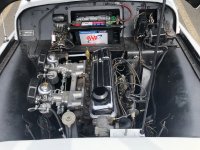 B67F4B01-8A2A-4728-B3FF-69DDD6B1BEE8.jpeg3.6 MB · Views: 141
B67F4B01-8A2A-4728-B3FF-69DDD6B1BEE8.jpeg3.6 MB · Views: 141 -
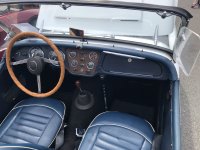 B9572C9F-DCF9-41B4-BBC8-8CE8FD1ACAD0.jpeg3.4 MB · Views: 142
B9572C9F-DCF9-41B4-BBC8-8CE8FD1ACAD0.jpeg3.4 MB · Views: 142 -
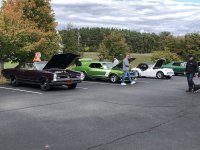 DEE21FB2-1B6F-4C6F-A199-AEA43CA8BA1B.jpeg3.6 MB · Views: 140
DEE21FB2-1B6F-4C6F-A199-AEA43CA8BA1B.jpeg3.6 MB · Views: 140 -
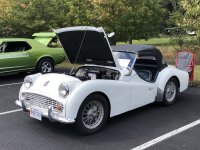 5E65C37F-E4A8-4F6D-8B96-161DBF459D42.jpeg3.3 MB · Views: 156
5E65C37F-E4A8-4F6D-8B96-161DBF459D42.jpeg3.3 MB · Views: 156
Bob_Spidell
Yoda
Offline
re: "... Believe it or not, I drive it home in 1987, and it boiled over twice. ..."
No one here is going to have any trouble believing that
No one here is going to have any trouble believing that
dougie
Luke Skywalker
Offline
I've used this for years on my exposed chassis components to lubricate and prevent surface rust.

 www.zoro.com
www.zoro.com
Lps Premier Rust Inhibitor, Platinum Grade, H2, Aerosol Can, 11 oz, Brown 00316 | Zoro
Order Lps Premier Rust Inhibitor, Platinum Grade, H2, Aerosol Can, 11 oz, Brown, 00316 at Zoro.com. Great prices & free shipping on orders over $50 when you sign in or sign up for an account.
Attachments
Bob_Spidell
Yoda
Offline
A big second on LPS 3. I bought a gallon of it years ago, and applied it to some spots on my BJ8's chassis where the paint flaked off. The exposed metal stayed shiny and rust-free (and that car is an 'all-weather' car). Boeshield works well too, but I think the LPS is a bit more tenacious.
Donald1107
Senior Member
Offline
Fantastic advice! Thank you.
kodpkd
Jedi Hopeful
Offline
Has anyone used
Cold Galvanizing Spray Paint to paint the leaf springs? After drying it leaves kind of a slippery surface.
Cold Galvanizing Spray Paint to paint the leaf springs? After drying it leaves kind of a slippery surface.


